The Beginning Learner’s Russian Dictionary is, as its name implies, designed for beginning learners of the Russian language, including those who are going to take the Test of Russian as a Foreign Language (TORFL) at the elementary (A1) level. The dictionary is based on the official Lexical Minimum for the standardized test, which was developed by the Russian Ministry of Education and Science and includes 780 items that learners are expected to know at the A1 level. To these, the names of countries, common Russian personal names, and grammatical terms have been added, bringing the total number of headwords in the dictionary to just over 1,000. Whether or not you plan to take the TORFL test, this selection of vocabulary will provide a solid base upon which to build your competency in Russian.
The dictionary offers many advantages for beginning learners over other Russian-English dictionaries.
- It offers a reader-friendly, uncluttered layout.
- Only senses appropriate to the A1 level appear in the entries.
- Grammatical information is presented clearly in tables along with invaluable usage notes.
- Example sentences contain only A1-level vocabulary.
Beginning learners may find other dictionaries overwhelming, as entries contain multiple senses, many of which are uncommon and make it difficult to determine which sense is intended. Such dictionaries present limited grammatical information, often in abbreviated form, under the assumption that the reader is proficient in Russian grammar. Likewise, example sentences may contain too many higher-level vocabulary words to be of use to beginning learners.
The Beginning Learner’s Russian Dictionary is meant to be more than a reference in which to look up unknown words. It is a study tool to expand your lexicon and build a solid base in both vocabulary and grammar. You are encouraged to read through entry after entry, studying the structure of the example sentences, noticing the inflections of nouns, adjectives, and verbs, and practicing your listening skills and pronunciation while listening to the accompanying audio tracks.
Sections: Each section begins with the letter written upper and lower case in three styles: serif typeface, sans-serif italic, and handwriting.

Order of Entries: The headwords are arranged in alphabetical order. On the back cover of this book, you can find a table of the Russian alphabet along with the page number on which each letter’s section begins.
Accent Marks: Russian words of more than one syllable are marked with an accent mark ( ´ ) over the stressed syllable. The letter ё is always stressed even though no accent mark is written. Accent marks are only used in materials for learners, such as this dictionary, and do not normally appear in Russian texts. It is important to learn which syllable of a word is stressed for correct pronunciation. The stressed syllable sometimes changes when a word is inflected. For example, the word цена́ (price) is stressed on the second syllable, while its plural це́ны (prices) is stressed on the first syllable.
Parts of an Entry:
- headword
- part of speech written in full, not abbreviated
- translation in bold
- example sentence with translation
- information box with special notes on usage, grammar, and
- pronunciation
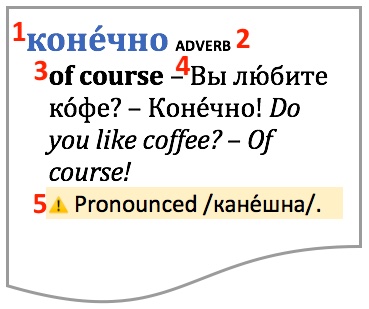
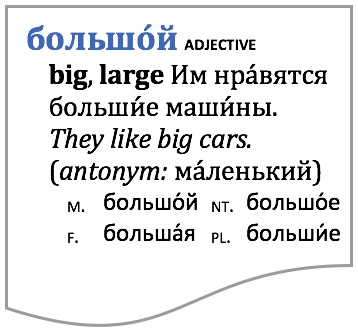
Adjectives: At the A1 level, you are expected to know the masculine, feminine, neuter, and plural forms of adjectives in the nominative case only. These are shown in the entries.
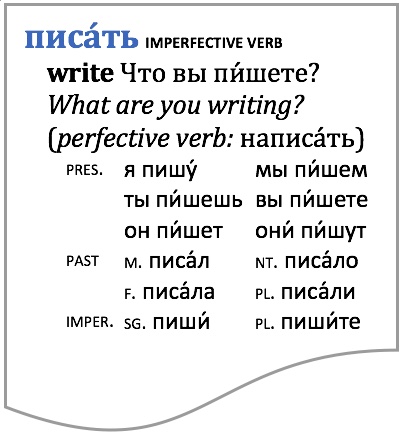
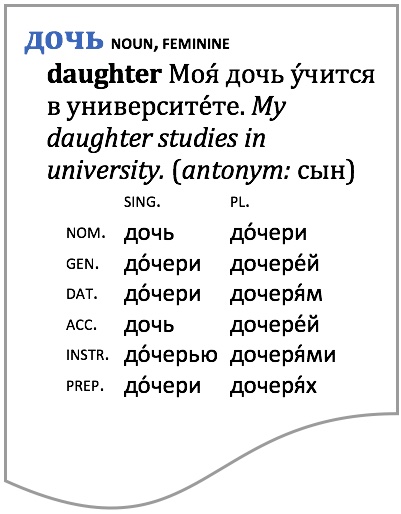
Nouns: The gender of a Russian noun can be determined by its ending, and thus gender is not normally marked in the dictionary. A noun ending in -а or -я is feminine; one ending in -о or -е is neuter; otherwise, it is masculine. The gender of nouns ending in -ь is marked, as some are masculine, and some are feminine. Nouns are also marked when there are exceptions to the above rules.
Cases: Even at the A1 level, you are expected to know the declension of nouns (and pronouns) in all cases. Case determines a noun’s role in a sentence (subject, object, etc.). Also, prepositions require certain cases. The preposition для (‘for’) is followed by a noun in the genitive case. The preposition с, as can be seen in the example sentence on the left, takes the instrumental case… at least when it has the meaning ‘with.’ Mastering cases is essential to attaining fluency in Russian, and so, they should be, along with verb conjugations, a focus of your studies from early on.
This article was taken from the Introduction and Using the Dictionary sections of the book Beginning Learner’s Russian Dictionary.

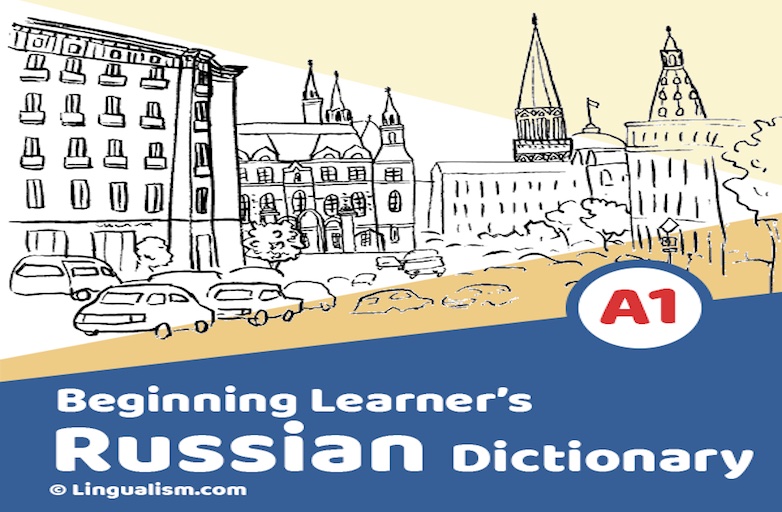

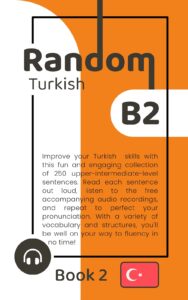

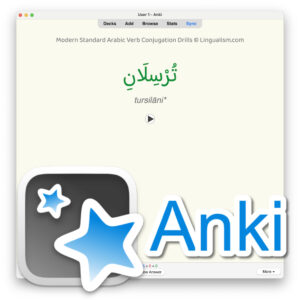
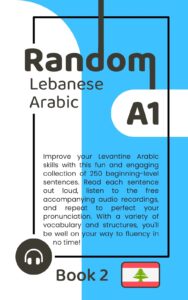
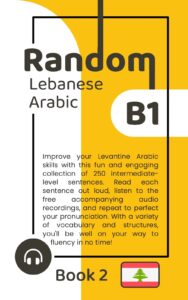
Thanks, bought the hard copy. For an absolute beginner (after learning the alphabet), the quick lookup index on the back cover is genius.